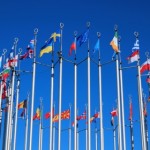The debate on the future of Europe is regaining momentum as the deadline for Brexit (March) and the date for elections to the European Parliament (May) approach.
The British decision to leave the EU is a symptom of a deeper dissatisfaction with the integration process. Many citizens no longer consider the concept of ‘ever closer union’ a promising one since that would eventually result in the creation of a new, larger state and the dismantling of the existing nation countries. Despite – or perhaps because of – globalisation and European integration, many citizens prefer to cling to their own nation and the benefits it provides. Democracy and the welfare state are elements of the European nation state, and so far, both dimensions are missing at the supranational level. Is the European integration process therefore doomed and merely an episode of European history? Or will European citizens and policy makers be able to reinvent the integration process successfully?
Some observers have argued that Europe only has the choice between a return to the nation state of the 20th century and a bold move forward to a full-fledged new, sovereign European state. Considering the prevailing scepticism about a deepening of Europe in Eastern Europe, Italy and also in France, a courageous integration policy will almost inevitably backfire.
But aren’t there options for further European cooperation without ignoring the apparent preferences of a significant part of citizens?
As early as 1979, Ralf Dahrendorf, then director of the London School of Economics and Political Science, remarked in astonishment that the view was widespread in Europe-friendly circles that the worst thing that could happen was a movement towards an à la carte Europe. That position, Dahrendorf said, reflects the strange puritanism, not to say masochism, which underlies many activities of the community: Europe must hurt to be good.[1] In that speech, Dahrendorf pointed to two indispensable features of a successful integration project: first, European citizens must recognise the benefits the integration process has for them individually. Second, a rigid one-size-fits-all integration process – devised by non-elected bureaucratic elites – will fail because it cannot reflect the diverging preferences of the nation states that constitute the European Union.
Today, the conflict between nation state, democratic freedom and efficiency gains through European deep integration cannot be solved by creating a tight new economic policy corset that is binding for all states. Freedom of choice for societies should be the highest guiding principle. The European integration process will become a straitjacket if the citizens of the member states have no alternatives. The rejection of different levels of integration implies a rejection of democratic processes. Ralf Dahrendorf pleaded for cherry picking as a model for European integration almost 40 years ago.
In 2018, a group of respected European academics suggested that the European Union give itself a club structure, with leeway to select certain elements of the integration process and stay clear of others. The proposal, which reflects Dahrendorf’s thinking, is a significant innovation and a step forward in the debate.
Maria Demertzis of Bruegel, the Brussels-based economic think tank, and others acknowledge that European integration is not leading to a “United States of Europe” in the medium term. They discard the old notion that the EU is a ‘single-undertaking’ and that all member countries will eventually implement all policies of the group. Even the often hailed ‘multi-speed approach’ to European integration did not leave room for member countries’ divergent preferences: eventually, all countries will arrive at the same train station, if at staggered times.
They suggest, instead, a joint base of European integration and a total of four clubs, which countries may decide to join. The ‘bare-bones’ basis is essential and should cover a common set of fundamental policies in which all countries are likely to participate. Bypassing the common basis and joining a club will not be possible. The common basis should essentially be the old EC: the single market with consumer policy, trade policy, competition policy and some sectoral policies, such as transport regulation.[2] Joining the four clubs will be optional. Club 1 will be the Monetary and Economic Union; Club 2 will comprise the regulation of migration, asylum and the Schengen area; and Club 3 will address security and foreign policy. The last club will cover a range of other regulatory issues.
Is that a viable alternative to the current one-size-fits-all approach? It is the most politically sensible and viable proposal on the table. Neither multi-speed Europe nor the older idea of a Europe of concentric circles is as appealing. The latter implies a hierarchy of the integration process that may well result in resentment in those countries that have chosen not to be part of the integration elite.
Europe continues to be searching for a way forward. The old confidence is gone, populism seems to be spreading across the continent and the supporters of integration appear to be facing increasing resistance. The new proposal respects the diversity of European societies and sees heterogenity as a benefit rather than a problem. Europe may well be able to reinvent itself, but to achieve that goal, the first and foremost task is to scrap decade-old rigid concepts of integration that many European citizens no longer wish to embrace.
Heribert Dieter is Senior Fellow, German Institute for International and Security Affairs, Berlin & Visiting Fellow at Gateway House, Mumbai
This article was exclusively written for Gateway House: Indian Council on Global Relations. You can read more exclusive content here.
For interview requests with the author, or for permission to republish, please contact outreach@gatewayhouse.in.
© Copyright 2019 Gateway House: Indian Council on Global Relations. All rights reserved. Any unauthorized copying or reproduction is strictly prohibited.
References
[1] Dahrendorf, Ralf, Third Jean Monnet Lecture, European University Institute, A Third Europe?, November 26, 1979 <http://aei.pitt.edu/11346/>
[2] Demertzis, Maria., Jean Pisani-Ferry, André Sapir, Thomas Wieser, and Guntram Wolff, Bruegel Policy Brief, 3/2018, One Size does not fit all: European Integration by Differentiation., September, 2018 <http://bruegel.org/wp-content/uploads/2018/09/PB-2018_03_final3.pdf>


